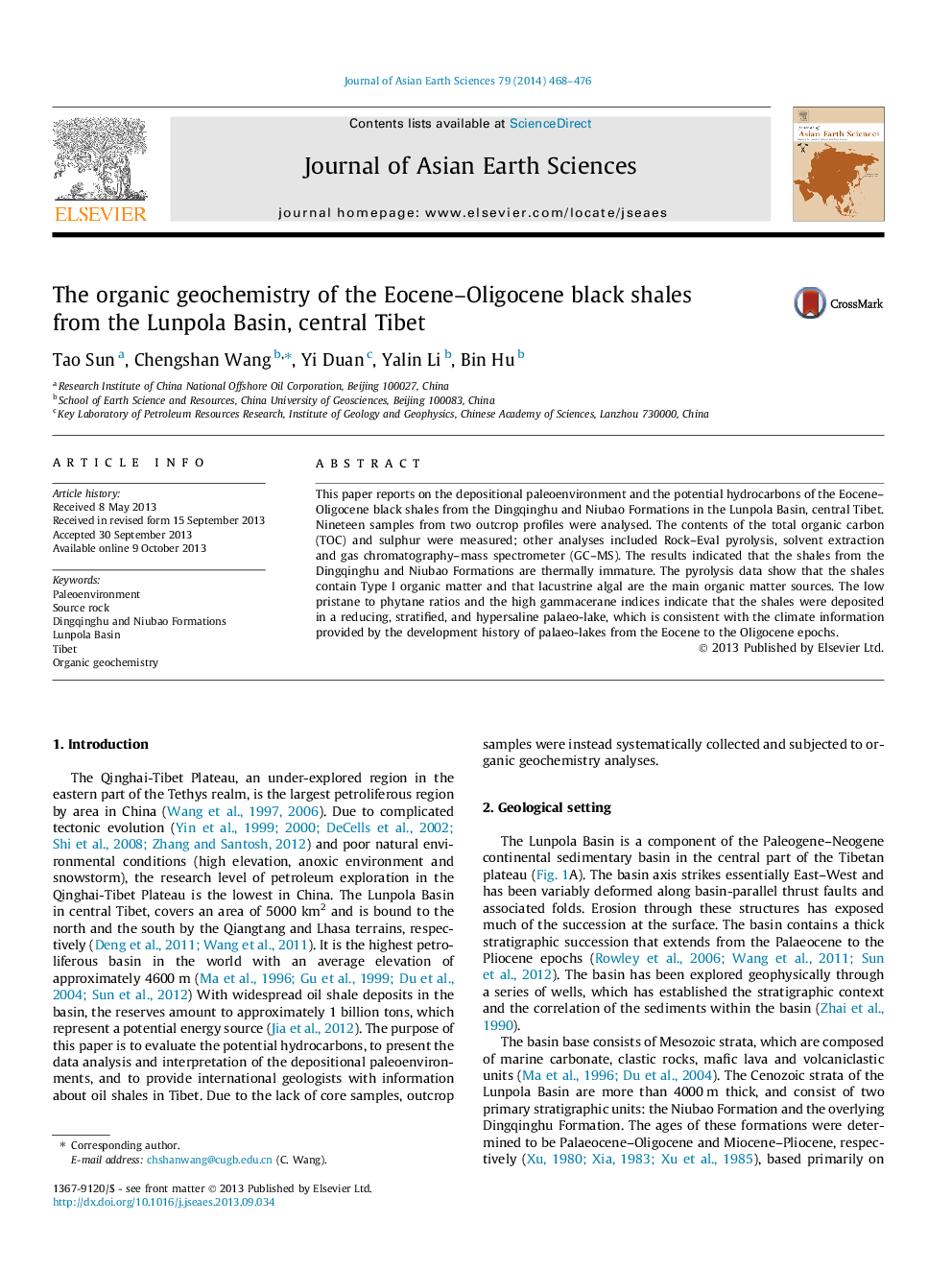| Article ID | Journal | Published Year | Pages | File Type |
|---|---|---|---|---|
| 4730923 | Journal of Asian Earth Sciences | 2014 | 9 Pages |
•We analysed the biomarker and hydrocarbon potential of samples in the Lunpola Basin.•Quantity, quality and maturity of organic matter were determined.•The study indicated that paleoclimate during sample deposition was probably cool and arid.
This paper reports on the depositional paleoenvironment and the potential hydrocarbons of the Eocene–Oligocene black shales from the Dingqinghu and Niubao Formations in the Lunpola Basin, central Tibet. Nineteen samples from two outcrop profiles were analysed. The contents of the total organic carbon (TOC) and sulphur were measured; other analyses included Rock–Eval pyrolysis, solvent extraction and gas chromatography–mass spectrometer (GC–MS). The results indicated that the shales from the Dingqinghu and Niubao Formations are thermally immature. The pyrolysis data show that the shales contain Type I organic matter and that lacustrine algal are the main organic matter sources. The low pristane to phytane ratios and the high gammacerane indices indicate that the shales were deposited in a reducing, stratified, and hypersaline palaeo-lake, which is consistent with the climate information provided by the development history of palaeo-lakes from the Eocene to the Oligocene epochs.
